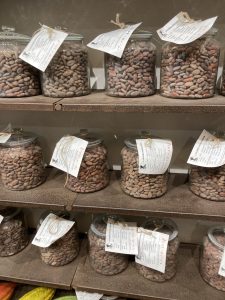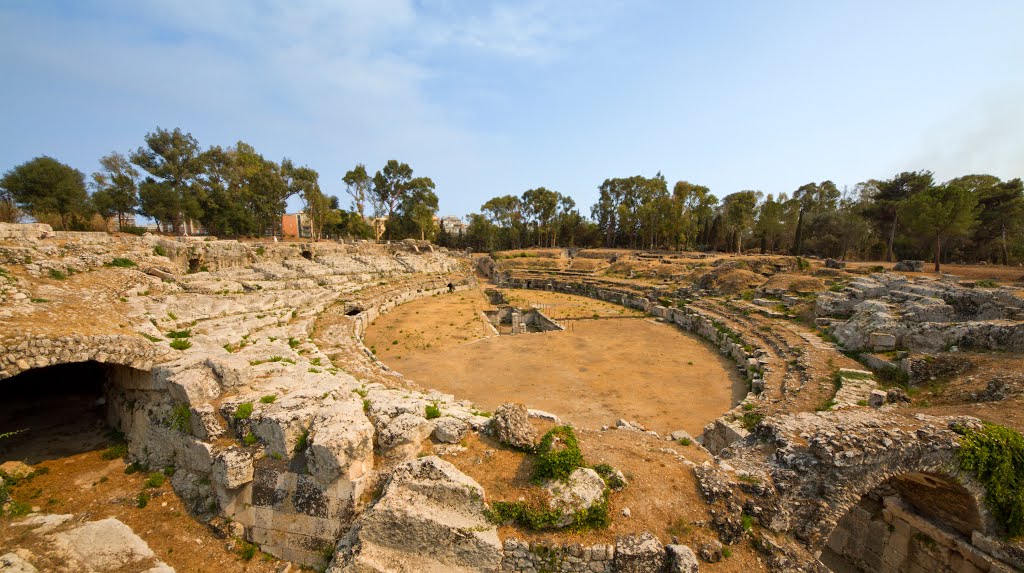Cheese, Chocolate, and Siracusa
Our second stop in Sicily was the city of Siracusa, which is a history nerd’s delight, or more accurately would have been a history nerd’s delight if we had been on a different kind of tour. (Two areas of the city are UNESCO World Heritage sites.) Instead of spending our time at the city’s archeological park and museum, we visited a small producer of farmstead cheeses near Calascibetta one day and an artisanal chocolate producer that has been in business in Modica since 1880 the following day.*
- Caco beans at Antica Dolceria Bonajuto
- The cheese producer we visited served lunch in a small restaurant devoted to “kilometer zero”–using products from within a one-kilometer radius.
Nonetheless we managed to get peek at the city’s rich history as we went past. As in Sicily as a whole, a series of foreign conquerors took the city over the centuries and left their mark without totally obliterating the cultures that came before. It is clear, even from the passing glance we managed, that Siracusa’s moment of historical glory was during the classical period, when it was one of the most important cities of the Hellenic world. Here are the bits that stuck with me:
- Siracusa was founded in the eighth century BCE by settlers from the Greek city-state of Corinth and became a city-state in its own right. By the fifth century BCE, it rivaled Athens in size.
- It was the birthplace of the mathematician and engineer Archimedes (c 287-212 BCE), who derived an approximation of pi, was one of the first to apply mathematics to physical phenomenon, articulated the law of buoyancy (known as Archimedes principle), and invented several machines, including an innovative screw pump.** He also designed a number of weapons that were used to defend the city when it was besieged by Romans. A Roman soldier killed Archimedes during the siege despite orders by the Roman proconsul Marcus Claudius Marcellus that he not be harmed, because obviously such an inventive scientist would be an asset to the Roman Republic.
- The Romans successfully took the city in 212 BCE. Siracusa became the capital of the Roman government in Sicily and remained the most important city in Sicily until Palermo became the capital of the Norman kingdom of Sicily in 1130.
- As was so often the case, conquerors used their predecessors monuments as quarries for building materials. The most notable example of this in Siracusa is the cathedral, which was built in the seventh century, when Siracusa was under Byzantine rule. Stone pillars from a fifth century BCE temple to Athena are integrated into the walls and shape the floor plan. Its facade was rebuilt in the baroque style after an earthquake in 1693 damaged the city.***
*No complaints here. We learned a lot about how both products were made and enjoyed meals centered onthem. Saffron cheese! Ricotta made that morning! An amazing cold chocolate drink! I must admit, after a four course lunch that included chocolate in every course I was not interested in eating chocolate again for several days.
**Spoiler alert, the Archimedean screw will appear in a blog post coming to this site.
***You’ll be hearing more about that earthquake as well.







